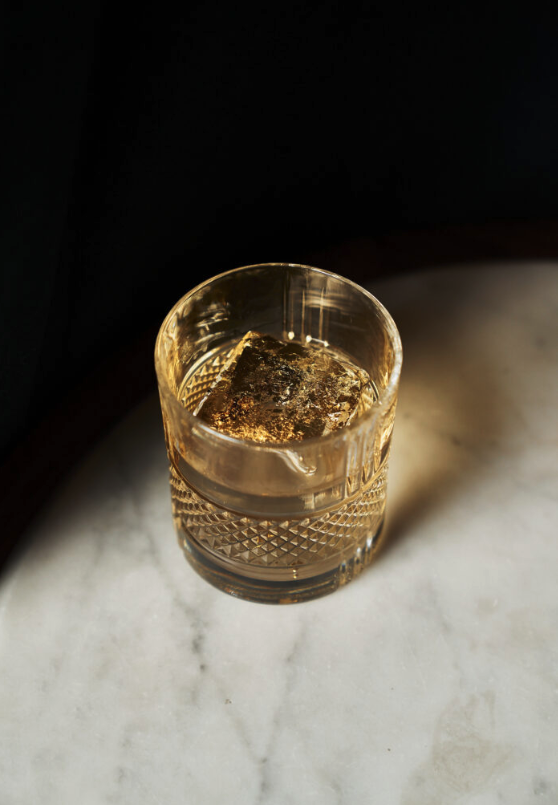Sweet vs. Dry Vermouth Explained: Choosing the Right One for Your Cocktail

When you want to expand your knowledge about different cocktails and become a drink connoisseur, you cannot overlook trying different types of vermouth. It is essential to understand the differences between sweet vs. dry vermouth as they will affect the flavor of the cocktail.
To help you get started, we have prepared this guide, which explains everything you need to know about sweet vermouth and dry vermouth. You can sample a variety of delicious cocktails, featuring sweet and dry vermouth at Rosevale Cocktail Room in New York City.
Dry vs. Sweet Vermouth: The Essentials
Before we get into the differences between dry vs. sweet vermouth, it is important to know how vermouth is made. All vermouths, whether sweet or dry, start out as a white wine. Next, the wine is aromatized using a variety of flavoring agents, including:
- Bark
- Citrus
- Spices
- Herbs
- Roots
Lastly, the vermouth is fortified to increase their alcohol by volume (ABV), which is the percentage of pure alcohol found in the vermouth. For example, a vermouth with a 15% ABV means that 15% of the entire bottle is pure alcohol. The higher the ABV, the more alcohol it has.
Another important thing to know about vermouths that come from the European Union (EU), including Italy, is that they must follow specific laws as follows:
- All EU vermouths must contain wormwood
- All vermouths must consist of at least 75% wine
- The ABV must be between 14.5% and 22%
- Vermouth di Torino can only be made in Piedmont, Italy, only using Italian wine, with an ABV between 16% and 22%
What Is Sweet Vermouth?
A sweet vermouth is a vermouth that contains sweeteners, which could include:
- Sugar
- Honey
- Caramel
Sweet vermouth can contain up to 15% sugar by volume. The added sugars are what give sweet vermouth their caramel color, which is often referred to as red or rosso. Sweet vermouths were first created in Italy in 1786 by Antonio Benedetto Carpano.
The French also created a version of sweet vermouth called white vermouth, or sweet white, in 1881. White vermouths can contain more sugar than traditional sweet vermouths and are usually less bitter.
Some of the many different drinks found on cocktail menus made using sweet vermouth are:
- Manhattan
- Negroni
- Vieu Carre
- Boulevardier
- Mezcal Negroni
- Americano
- Rob Roy
- Hanky Panky
- Blood and Sand
What Is Dry Vermouth?
Dry vermouths are pale or clear in color due to their low sugar content. They usually have between 4% and 5% sugars, sometimes less. Some brands contain no sugar at all. Dry vermouth also has a higher ABV because it has a lower water content. Dry vermouth was created in France in 1813 by Joseph Noilly.
Some of the cocktails made using dry vermouth are:
- Martini
- Dirty Martini
- Bamboo
- Gibson
- Soft Arms
- Yuzu Amaro Spritz
- Dry Manhattan
- Brooklyn
- Chrysanthemum
Differences Between Sweet Vermouth and Dry Vermouth
There are a few other differences between sweet vermouth and dry vermouth aside from the sugar content.
Sweet Vermouth
- Appearance: Sweet vermouth has a reddish-brown color from the added sugars.
- Flavor profile: Sweet vermouths can have various flavor notes depending on the flavoring agents used, often resulting in notes of caramel, spices, dark fruits, cocoa, herbs, and vanilla.
- Origin: Sweet vermouth originated in Italy.
- Bitterness: Sweet vermouth is less bitter than dry vermouth from the added sugars.
Dry Vermouth
- Appearance: Dry vermouth has a pale to clear color.
- Flavor profile: The flavor profile of dry vermouths has notes of herbs, floral, citrus, and other fruits.
- Origin: Dry vermouth originated in France.
- Bitterness: Dry vermouth is considered more bitter because of their lower sugar content.
Another difference between sweet and dry vermouth has to do with where they are made. While most people may assume that Italian vermouths are sweet, and French vermouths are either dry or sweet white, this is no longer the case today.
Several vermouth makers in Italy and France produce sweet, dry, and sweet white vermouths. There are even some vermouth producers in Spain and the United States.
Where Can You Find the Largest Collection of Vermouth in the World?
You can find the largest collection of vermouth in the world at Rosevale Cocktail Room in New York City. We have over 150 labels with five distinct styles ranging from:
- Extra dry
- Dry
- Semi-dry
- Semi-sweet
- Sweet
You can enjoy a variety of vermouth cocktails and vermouth on the rocks before or after a Broadway show, dinner in the Rosevale Kitchen, or a night out with friends. We also offer a vermouth tasting experience that can be booked in advance, and provides a more in-depth experience as you learn all about vermouth.
Dry Vermouth vs. Sweet Vermouth: Pairing Delectable Bites
When you are going to have small bites or a meal, it is essential to understand how dry vermouth and sweet vermouth pairs. Dry vermouth pairs better with:
- Seafood
- Shellfish
- Soft cheese, like brie and goat cheese
- Olives and nuts
- Light pasta dishes featuring citrus notes
- Dishes made using basil, dill, or tarragon
- Mediterranean appetizers and dishes
Sweet vermouth pairs well with:
- Cured meats, like salami and prosciutto
- Hard cheeses, like manchego, parmesan, and parmigiano-reggiano
- Roasted meat dishes featuring pork, duck, or beef
- Dried fruits and nuts
- Dark chocolate desserts
When enjoying a charcuterie board, it is recommended to have both dry vermouth and sweet vermouth drinks. For example, some people like starting with a martini while enjoying seafood, olives, and soft cheeses, and then sipping on a sweet vermouth on the rocks while enjoying cured meats and hard cheeses.
Explore the World of Vermouth in New York City
When you want to explore the largest selection of vermouths and compare sweet vs. dry vermouth, look no further than our New York City cocktail lounge. We also have a Martini Happy Hour daily from 7 p.m. until 9 p.m.
Rosevale Cocktail Room is conveniently located in the Theatre District inside the Civilian Hotel at 305 W 48th Street, on the second floor. While we do welcome walk-ins, we highly recommend making a reservation.
Sources:
Morais, R. (2017). Vermouth History and Flavors.
Tasch, B. (2020). An Introduction to Vermouth.
